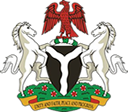-
-
Data Release Calendar
-
17
Notifications
-

-

KEYNOTE ADDRESS BT THE STATISTICIAN-GENERAL OF THE FEDERATION/CEO NATIONAL BUREAU OF STATISTICS, AT THE JOINT PRESS BRIEFING FOR THE LAUNCH OF THE COST OF A HEALTHY DIET INDICATOR, HELD AT THE NATIONAL BUREAU OF STATISTICS, ON WEDNESDAY, 31ST JANUARY 2024.
PROTOCOL
In line with this commitment, the unveiling of the indicator today is a substantial fulfilment of our mandate. The significance of this launch is particularly pronounced in its contribution to food security and the decision-making processes related to food systems. This event underscores our dedication to providing information that not only guides strategic actions but also directly influences critical aspects of our nation's development, reinforcing the indispensable role that accurate and timely data plays in shaping a prosperous and sustainable future.
Information from this exercise will provide a useful basis for the government to track its efforts and programmes towards attaining this aspect of its 8-Point Agenda.